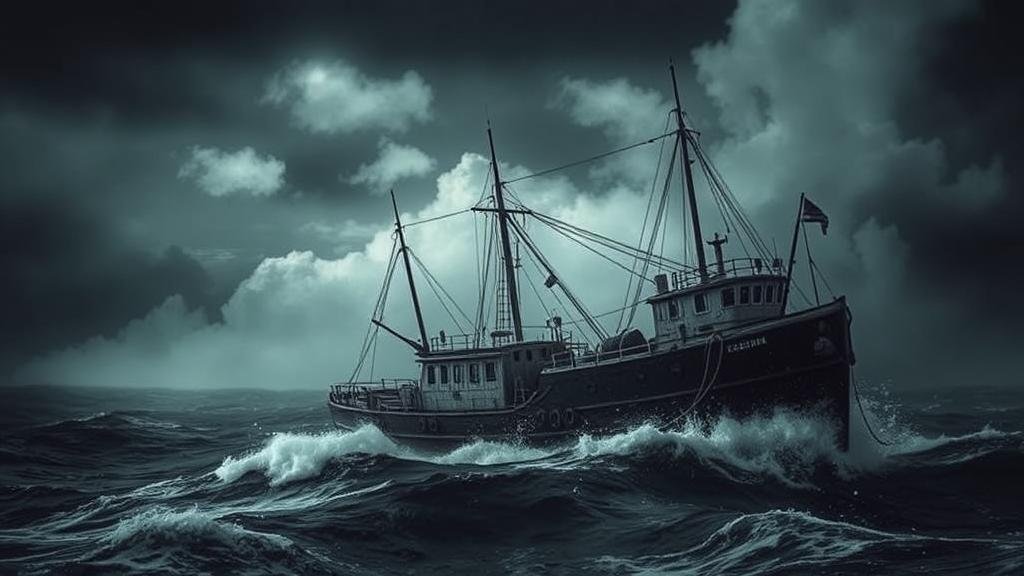“`html
The Hidden Cost of Tuna: Is Your Lunch Fueling Modern Slavery?
Let’s be real: that can of tuna in your pantry is the unsung hero of sad desk lunches and last-minute dinners. It’s cheap, fast, and makes you feel vaguely healthy. But what if I told you that pantry staple has a darker backstory than a Batman movie?
Stick with me, because a mountain of evidence shows a scary amount of the world’s tuna is sourced from fisheries riddled with severe human rights abuses. We’re talking exploitation, abuse, and yes, even modern-day slavery. The quest for sustainable canned tuna has often overlooked the people catching it.
This is the part where you look at your sandwich with suspicion. Good. Let’s talk about the story behind the fish.

The Dark Reality on the High Seas: A Look at the Tuna Supply Chain
Picture the open ocean. It’s not the serene paradise from a cruise commercial. For many migrant workers, mostly from Southeast Asia, the dream of a steady paycheck turns into a horror movie. The fishing industry is rife with forced labor, and the problem is particularly acute on tuna vessels.
According to human rights groups, the conditions are brutal:
- Extreme Working Hours: Think your 9-to-5 is a grind? Try 20-hour shifts, for weeks on end.
- Inhumane Conditions: We’re talking cramped, filthy quarters and contaminated food and water.
- Abuse and Intimidation: Many boat captains rule by fear, using beatings and threats to keep crews in line.
- Debt Bondage (aka Modern Slavery): Passports are confiscated and wages are withheld to pay off bogus recruitment fees, creating a debt trap.
These workers are stranded hundreds of miles from anywhere. And lest you think this is a few bad apples, a Reuters report found that about 80% of the biggest canned tuna brands couldn’t trace their fish source. They know as much about their tuna supply chain as I know about the plot of Twilight.

From Fishing Boat to Your Grocery Cart: How Forced Labor Hides
So, how does a fish caught in a floating nightmare land in your grocery cart? One word: transshipment.
It’s a shady laundering scheme. Fishing boats transfer their catch to giant freezer ships—“reefers”—far at sea. This lets fishing boats stay offshore for years, hiding from authority. It also mixes catches from dozens of boats, making it impossible to trace your specific can of tuna back to the vessel—and the crew that suffered for it.
The fish gets passed around more than a fruitcake at Christmas. By the time it hits your local supermarket, its horrific origin story has been completely sanitized. This issue came to a head when Indonesian fishermen sued Bumble Bee Foods, claiming the company knew its supply chain was full of forced labor and benefited from the cheap fish. It was a landmark case linking a major brand to the horror show on the water.

Why Isn’t More Being Done About Ethical Tuna Sourcing?
“So, where are the Ocean Police?” you ask. Policing the vast ocean is a jurisdictional nightmare. Plus, transshipment makes it easier to hide a crime than it is for me to hide my cookie consumption from my spouse.
For years, brands have relied on “self-regulation” and weak sourcing policies. That little “sustainability” sticker on the can? It’s usually about fish populations, not the fishermen. It creates a fog of virtue-signaling that makes finding truly ethical tuna a challenge for shoppers. The focus has been on the price tag, not the people.

Your Consumer Superhero Arc: How to Find Slave-Free Tuna
Feeling down? Don’t be. This is where you get your superhero cape. Your wallet is your superpower.
Here’s your mission to find ethical tuna:
1. Research Your Tuna Brands
Put on your detective hat. A two-minute Google search can reveal a lot. Check resources like the Greenpeace tuna guide, which ranks brands on sustainability and ethics. Look for companies transparent about their sourcing policies.
2. Look for Meaningful Certifications
No label is a silver bullet, but some are better than others. The Fair Trade Certified seal is a great one to look for, as it specifically focuses on workers’ rights, fair pay, and safety in Fair Trade Certified seafood. The Marine Stewardship Council (MSC) label is good for fish populations, but it doesn’t guarantee the fishermen were treated humanely.
3. Demand Transparency from Retailers
Go on, be that person. Ask your grocery store about their ethical sourcing policies for seafood. Tweet at them. When enough customers make a fuss, corporations magically develop a conscience.
4. Diversify Your Choices
Consider giving long-line caught tuna a break, as it’s linked to the worst human rights abuses. Exploring other sustainable fish lets the tuna industry know that consumers are demanding change.
The Way Forward
That can of tuna is a link in a global chain that is currently broken. Fixing it is a shared responsibility, but change is often driven by us, the shoppers. By demanding slave-free tuna, we can force the industry to clean up its act.
So, the next time you’re in the grocery aisle, remember the hidden cost. Choose wisely.
“`